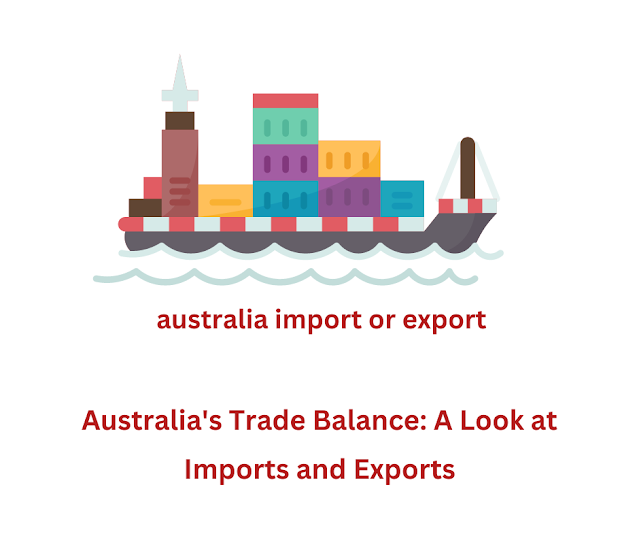I. Introduction
A. Brief overview of Australia's economy
B. Importance of trade balance
C. Thesis statement
II. Exports in Australia
A. Overview of top exports
1. Commodities (e.g. coal, iron ore)
2. Agriculture (e.g. beef, dairy products)
3. Manufactured goods (e.g. machinery, medical equipment)
B. How exports contribute to the Australian economy
1. Jobs and economic growth
2. Foreign investment
3. Balance of trade
III. Imports in Australia
A. Overview of top imports
1. Consumer goods (e.g. electronics, clothing)
2. Machinery and equipment
3. Fuels and energy products
B. How imports support the Australian economy
1. Access to goods not produced domestically
2. Cost-effectiveness
3. Support for domestic production and job creation
IV. Conclusion
A. Recap of key points
B. The importance of maintaining a balance between exports and imports
C. Final thoughts on Australia's trade balance and its impact on the economy.
Australia's Trade Balance: A Deep Dive into Imports and Exports
I. Introduction
A. Brief overview of Australia's economy: Australia is one of the world's leading economies, with a gross domestic product (GDP) of over $1.3 trillion.
B. Importance of trade balance: A country's trade balance is a crucial indicator of its economic health, reflecting the difference between the value of its imports and exports.
C. Thesis statement: Despite being a leading exporter of goods and resources, Australia also heavily relies on imports to support its economy.
II. Exports in Australia
A. Overview of top exports: Australia is a major exporter of commodities, agriculture, and manufactured goods. Some of its top exports include coal, iron ore, beef, dairy products, and machinery.
B. How exports contribute to the Australian economy:
Jobs and economic growth: Exporting goods and resources helps drive economic growth and creates jobs in the manufacturing and mining sectors.
Foreign investment: Exporting products can attract foreign investment, as companies look to invest in countries that have a strong trade position.
Balance of trade: A strong export market can help maintain a positive trade balance, which is essential for a country's economic stability.
III. Imports in Australia
A. Overview of top imports: Australia imports a wide range of goods, including consumer goods, machinery and equipment, and fuels and energy products. Some of its top imports include electronics, clothing, vehicles, and petroleum.
B. How imports support the Australian economy:
Access to goods not produced domestically: Importing goods that are not produced domestically allows Australia to offer a wider range of products to its consumers and businesses.
Cost-effectiveness: Imports can sometimes be more cost-effective than producing goods domestically, which can help keep prices low for consumers and businesses.
Support for domestic production and job creation: By importing inputs and raw materials, Australian manufacturers can lower their costs and increase their competitiveness, helping to support the growth of domestic production and job creation.
IV. Conclusion
A. Recap of key points: In conclusion, despite being a major exporter, Australia also heavily relies on imports to support its economy. Exports help drive economic growth and create jobs, while imports provide access to goods not produced domestically, lower costs, and support domestic production.
B. The importance of maintaining a balance between exports and imports: Maintaining a balance between exports and imports is crucial for Australia's economic stability. A positive trade balance can help ensure that the country has access to the goods it needs while also driving economic growth through exports.
C. Final thoughts on Australia's trade balance and its impact on the economy: In conclusion, Australia's trade balance is a key indicator of its economic health and has a significant impact on its overall prosperity. By understanding the importance of both exports and imports, we can gain a better understanding of Australia's economy and its position in the global marketplace.

Post a Comment
Post a Comment